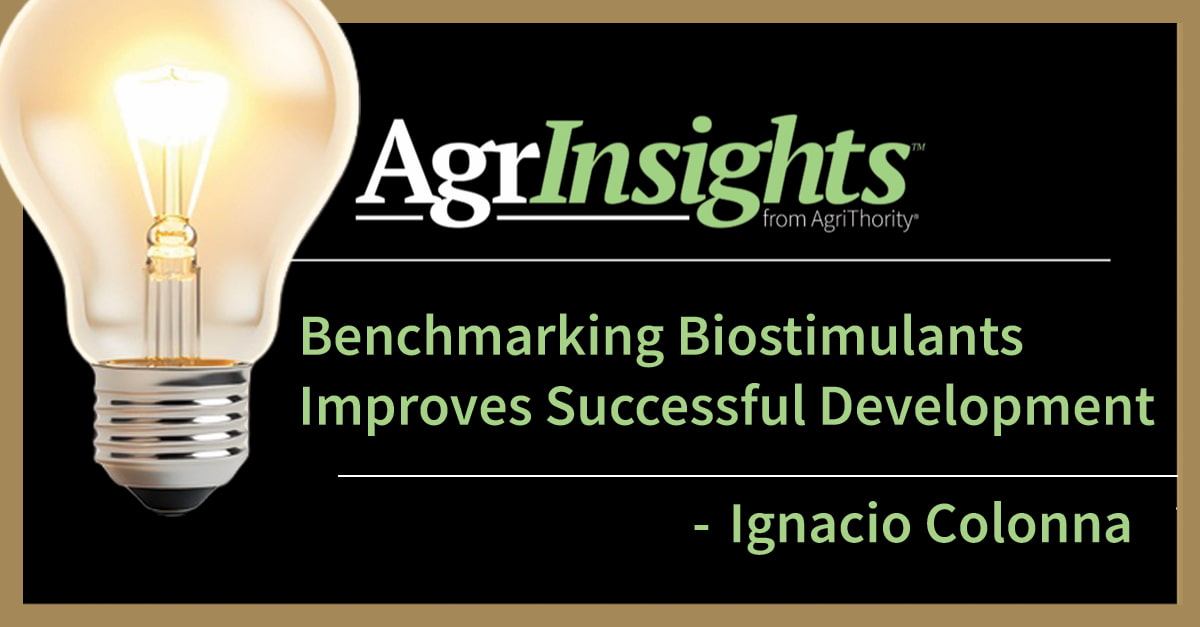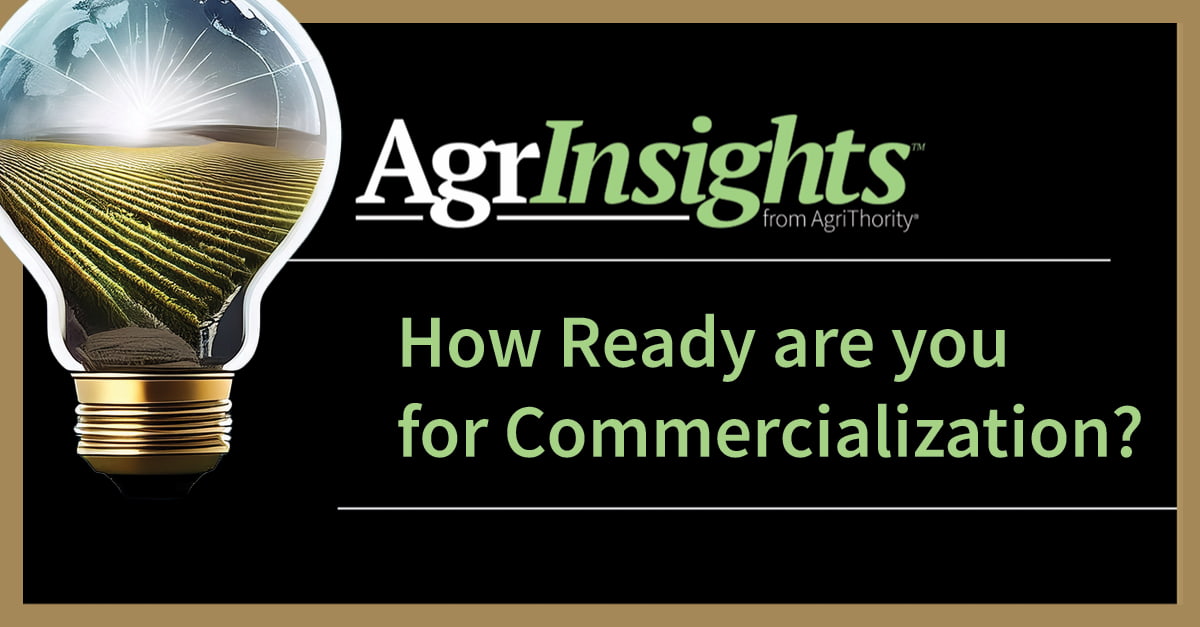Introduction
Biologicals are a broad category of substances used in human medicine and agriculture and typically derived from living organisms or substances derived from plants. In agriculture, biological refers to three distinct types of products; biological pesticides (biocontrols), that control pests, microbial inoculants that enhance plant nutrient availability and biostimulants that improve plant growth, improve nutrient utilization, support soil health or enhance plant stress tolerance. The exact definition and scope of products included in each of these categories may differ among countries or stages and also involve different regulatory requirements. This article will address differences between these categories in data required to gain grower acceptance, with special emphasis on unique requirements for biostimulants.
While these three groups face many common challenges in gaining grower acceptance, biostimulants have some unique challenges. Market research has shown that growers expect strong performance data to show these products provide increased yield and improved ROI. Biostimulants continue to struggle with a “snake-oil syndrome,” stemming from disproportionate attention to safety and environmental claims rather than rigorous validation of product performance for the intended use. Predictability is also a major issue for biologicals as the volume of data is often too limited to adequately define conditions when they will or will not work.
While biocontrols and microbial inoculants have been used for decades to control pests or improve plant nutrient availability, biostimulants have only recently been recognized as inputs in standard production systems. Use of biostimulants has increased, but grower adoption has not been as rapid as anticipated in prior market forecasts.
Challenges Unique to Biostimulants
A comprehensive overview of plant biostimulants was published recently as an editorial in the international journal, Scientia Horticulturae. (du Jardin, et.al. 2025) https://doi.org/10.1016/j.scienta.2025.114281
This review by eight scientists from six different countries provides an extensive discussion of the definitions, scientific evidence, and regulatory requirements as they impact the current and future status of biostimulants, globally. The article is an informative treatise for anyone involved in the development and marketing of biostimulants. It also proposes an approach to the collection of efficacy evidence unique to biostimulants, to ensure a credible process in the validation of performance and increasing grower acceptance.
Jardin, et. al. 2025 identified five types of data that are critical to the successful development of biostimulants but are often not available at market introduction. The suggestion is that the absence of data on these critical characteristics results in loss of trust among farmers and researchers, a loss that is slow to recover. While yield remains the standard for evaluating agricultural inputs, it does not always, by itself, correctly represent the value of biostimulants. To measure their true value, it is necessary to understand the physiological responses induced by biostimulants.
Yield results are still critical, but it is essential to define a product further to substantiate credibility and understand how to use a biostimulant for predictable and consistent performance. Identified areas requiring exploration are listed in Table 1.
| Critical Issues | Description |
|---|---|
| Mechanisms of Action (MOA) | For credibility with farmers and influencers it is important to understand how biostimulants work at the physiological and molecular levels, including their effects on stress responses, nutrient assimilation and plant metabolism. |
| Quantifiable Effects | Reliable metrics to assess their impact beyond yield, such as root development, nutrient utilization, antioxidant activity, and stress tolerance should be defined and utilized to produce effective testing protocols. |
| Validation Protocol | Establishing standardized methods to evaluate efficacy under real-world farming conditions, ensuring reproducibility and credibility. |
| Regulatory Clarity | Aligning global definitions and regulations to reduce confusion and improve scientific communication. |
| Integration Into systems | Integration into systems: Studying how biostimulants can be effectively incorporated into broader agronomic strategies, such as precision irrigation, fertilization and improved efficiency of agricultural inputs in general |
Mechanisms of Action (Mode of Action or MOA)
Understanding how a product works is valuable for any type of product. Being able to explain a positive response is a critical part of developing credibility with farmers and influencers. Understanding MOA is also a valuable step early in the development process, not just for biostimulants but for any innovation. Understanding MOA can provide valuable knowledge to guide the design of development protocols for defining application timing and what parameters to measure to validate performance. This development step is often relegated to low priority as it can be very expensive, but failure to understand why and how a product works can add considerable time and expense to defining when it will work and when it will not. Understanding the MOA can also help predict application methods and timing most likely to produce desired results. MOA provides valuable clues in defining the other key research priorities of quantifiable effects, protocols for validation of performance and integration of a product into production practices. Our AgriThority® experience indicates that larger companies acquiring biostimulant products from third parties are increasingly demanding clear MOA information before passing a candidate product to a serious round of internal evaluation. A critical step in the successful development of any production input is a complete review of all that is known from in-house research as well as the global knowledge base to understand what is already known. Benchmarking performance of a new product against commercial standards can enhance efficiency of the development process through early identification of priorities for the different uses of the product.Quantifiable Effects
Biostimulants do not supply nutrients or control pests to directly influence plant productivity, but instead they support internal functions that result in conditions conducive to root development, antioxidant defense and nutrient availability. These responses enhance the biological potential of the plant to tolerate stress, utilize nutrients, increase growth of roots and shoots, produce more reproductive structures and other positive responses. The outcomes of these effects are shaped by environmental conditions and may not lead to immediate biomass increases. Reliable metrics are required to assess their impact beyond yield, including root development, nutrient utilization, antioxidant activity, and stress tolerance. It is, therefore, desirable to identify the direct responses a biostimulant initiates, and then define methods to quantitatively measure those direct responses.Validation Protocol
The validation of a biostimulant claims must ideally be based on widely accepted methods that can directly measure plant response to the product and allow understanding what reasonable indirect effects can be expected. While the final response will most likely be affected by variables such as moisture, temperature and other factors that are somewhat unpredictable, the evaluation under an established environmental range will provide a basis to establishing a reasonable boundary to this uncertainty. Such a validation approach will provide evidence that the potential for the final response was created and allow some level of prediction of product performance from a scientific basis.Regulatory Clarity
Regulatory clarity is a key issue, but it will not be resolved by independent action on the part of companies developing biostimulants. Biostimulants represent a very diverse group of organisms that produce a wide variety of plant responses. The objective of identifying a single, consistent set of regulatory requirements for anything considered a biostimulant seems an unrealistic objective. Industry organizations and government agencies globally have recognized the need to bring clarity and some degree of harmonization to regulatory issues related to biostimulants. There is an effort to define subcategories of biostimulants and focus globally on regulatory harmonization within each subcategory. This is more realistic and would allow regulatory clarity for each type of biostimulant. The resolution of this critical need will depend on continued coordinated action by all interested parties.Integration Into Systems (Under Real World Farming Conditions)
After a product is validated and defined, successful launch depends on well-planned and implemented on-farm testing and careful analysis of performance under real world conditions simulating commercial practices as closely as possible. It is important for companies involved in product development to understand that “real world” evaluation requires a robust technical approach to avoid falling into simplistic testing methods that most likely confound biostimulant product effects with other sources of variability such as soil, crop management or field history. Approaches such as the widely used “split field” testing are highly prone to such confounding and thus may risk producing strongly biased information. Failure to follow this step relegates market acceptance to trial and error on the part of early adopters. Trial and error testing may save a year or more in the development process, but it will likely result in a delay in market acceptance by years, if ever. The random chance of trial and error is a high-risk approach to the final stages of the development process.Conclusions
Biostimulant development requires attention to data beyond yield and ROI. Understanding the MOA is especially important when developing biostimulants. Clear definition of MOA will allow for more efficient design of each step in the development process and aid in defining and quantifying variables that impact consistent, predictable performance. Understanding how a biostimulant works ultimately adds credibility to grower recommendations. Farmer testing and experience must start positively to improve adoption. When preparing your novel products to compete in real-world environments, don’t risk first-use failure. Engage AgriThority’s experienced TrialWerx® team and StatWerx™ analytic team to build actionable insights for best management practices and to de-risk your go-to-market plans.References
du Jardin, Patrick, Patrick H. Brown, Theodore M DeJong, Fabricio Cassan, Antonio Ferrante, Vasileios Fotopoulos, George A Manganaris and Petronia Catillo. 2025. Unlocking the black box of plant biostimulants. Scientia Horticulturae, Vol. 350, August 2025, 114281.TrialWerx® large-scale on-farm trialing system transforms season-long spatial and temporal data into value for growers, their advisors and the sales channels to solidify adoption. Our system verifies by environment where a product does or does not work. Most importantly, we can help determine why as we validate the best management practices (BMPS).
StatWerx™ analytic program drives confidence, credibility and ROI. It provides actionable insights and benchmarking to build a solid foundation of product performance, positioning or best management practices. These outcomes are derived from in-depth data analysis, meta-analysis across environments and seasons plus benchmarking evaluations. Summarizing seasons of work or analyzing volumes of past or current real-world data can determine insights for recommended uses.



